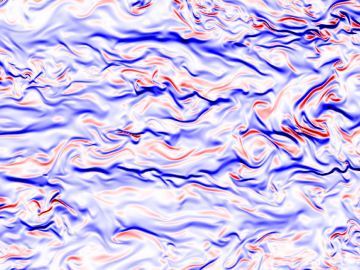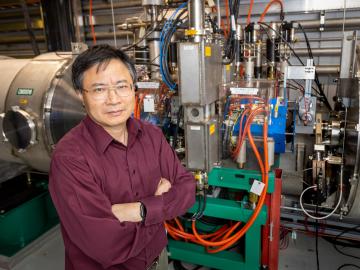
Filter News
Area of Research
- Advanced Manufacturing (2)
- Biological Systems (1)
- Biology and Environment (22)
- Electricity and Smart Grid (1)
- Energy Science (29)
- Fusion and Fission (14)
- Fusion Energy (7)
- Isotope Development and Production (1)
- Isotopes (2)
- Materials (26)
- National Security (5)
- Neutron Science (42)
- Nuclear Science and Technology (6)
- Supercomputing (18)
News Type
News Topics
- (-) Advanced Reactors (8)
- (-) Bioenergy (37)
- (-) Fusion (24)
- (-) Grid (28)
- (-) Mercury (3)
- (-) Nanotechnology (10)
- (-) Neutron Science (63)
- (-) Nuclear Energy (41)
- 3-D Printing/Advanced Manufacturing (51)
- Artificial Intelligence (73)
- Big Data (34)
- Biology (42)
- Biomedical (22)
- Biotechnology (14)
- Buildings (30)
- Chemical Sciences (42)
- Clean Water (10)
- Composites (14)
- Computer Science (82)
- Coronavirus (3)
- Critical Materials (9)
- Cybersecurity (14)
- Education (5)
- Emergency (3)
- Energy Storage (29)
- Environment (77)
- Exascale Computing (42)
- Fossil Energy (5)
- Frontier (40)
- High-Performance Computing (72)
- Hydropower (3)
- Isotopes (26)
- ITER (1)
- Machine Learning (32)
- Materials (68)
- Materials Science (48)
- Mathematics (6)
- Microelectronics (4)
- Microscopy (12)
- Molten Salt (2)
- National Security (50)
- Partnerships (53)
- Physics (28)
- Polymers (5)
- Quantum Computing (28)
- Quantum Science (36)
- Security (12)
- Simulation (44)
- Software (1)
- Space Exploration (10)
- Statistics (3)
- Summit (29)
- Transportation (22)
Media Contacts

Creating energy the way the sun and stars do — through nuclear fusion — is one of the grand challenges facing science and technology. What’s easy for the sun and its billions of relatives turns out to be particularly difficult on Earth.

Ken Herwig's scientific drive crystallized in his youth when he solved a tough algebra word problem in his head while tossing newspapers from his bicycle. He said the joy he felt in that moment as a teenager fueled his determination to conquer mathematical mysteries. And he did.

Simulations performed on the Summit supercomputer at ORNL revealed new insights into the role of turbulence in mixing fluids and could open new possibilities for projecting climate change and studying fluid dynamics.

When opportunity meets talent, great things happen. The laser comb developed at ORNL serves as such an example.

Like most scientists, Chengping Chai is not content with the surface of things: He wants to probe beyond to learn what’s really going on. But in his case, he is literally building a map of the world beneath, using seismic and acoustic data that reveal when and where the earth moves.

In a discovery aimed at accelerating the development of process-advantaged crops for jet biofuels, scientists at ORNL developed a capability to insert multiple genes into plants in a single step.

An innovative and sustainable chemistry developed at ORNL for capturing carbon dioxide has been licensed to Holocene, a Knoxville-based startup focused on designing and building plants that remove carbon dioxide

ORNL will team up with six of eight companies that are advancing designs and research and development for fusion power plants with the mission to achieve a pilot-scale demonstration of fusion within a decade.

When reading the novel Jurassic Park as a teenager, Jerry Parks found the passages about gene sequencing and supercomputers fascinating, but never imagined he might someday pursue such futuristic-sounding science.

Nature-based solutions are an effective tool to combat climate change triggered by rising carbon emissions, whether it’s by clearing the skies with bio-based aviation fuels or boosting natural carbon sinks.


